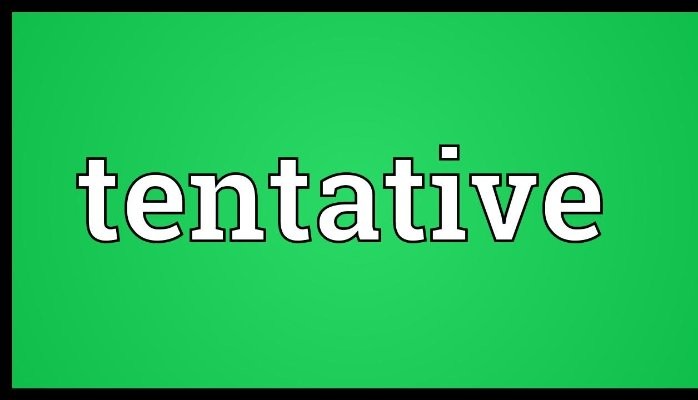
The fine art of being tentative
Our education, training and later our work lives demand that we be sure of ourselves. Damn sure of ourselves. We are expected to get our facts right and state it with clarity and confidence. Don’t leave any room for doubt, we are told. Those who are seen as unsure, uncertain and tentative are considered ineffective.
So, when we got trained to become Coaches and our Coaching Skills Guru and facilitator Dr B J Prashantham pleaded that as coaches we would benefit if we were tentative in our approach and style, many of us just did not get it. Where is the question of being tentative when we are sure, many felt!
However, after months of training and the several coaching encounters later, all of us as coaches in our coaching community swear by the fine art of being tentative.
I am convinced that the art of being tentative is important not just for coaches but also for leaders, in fact for anyone who desires to have a great conversation and build healthy relationships.
So, what is the fine art of being tentative all about?
To be tentative is to deliberately and mindfully cultivate a mind-set in which one remains open to new insights and information and points of view and demonstrates to others that one can never have the last word.
To be tentative is to withhold judgement.
To be tentative is to acknowledge that you never know the full truth about anything.
To be tentative is to be convinced that there is another point of view, another perspective that the person in front of you might have and that by being tentative, you might be able to discover it and harvest it and enrich your own world view.
To be tentative is to be alive to recognise that there is more to anything than what you think there is.
To be tentative is to also be as curious about what you don’t know as you are certain about what you know.
Let me give you an example. A CEO walks into a room, typically a review meeting with all his direct reports. Within minutes or even seconds of a discussion on any topic being initiated, the CEO starts sharing his point of view, his conclusions and his views about what needs to be done – the assumption is that he has all the answers and others don’t. He is so sure of himself that he believes that there is nothing else to add, nothing else to be said. After a few minutes the team around him figures outs what is good for them. They say yes to everything he says and the meeting ends and then they go about doing what they think is right. Have you seen such a CEO? Chances are you have.
Now imagine a CEO who is tentative. He displays a curiosity to know what is in the minds of his team. He encourages them to speak. When he does interject, he uses semantics that are tentative.
(Tentative semantics would include phrases like, “I am wondering if ….”, I am not sure but you may want to consider looking at ….”, “Is it possible that ….”, “would you like to ….” )
As a result of being tentative, others in the room are encouraged to believe that there is space for other opinions and points of view. They join in and have real conversations. There are animated discussions and as a result, hopefully better quality decisions and greater ownership for outcomes.
Leaders who are tentative in their conversational style, encourage others to be open and speak up. They create a climate around them that is free and spontaneous.
Being tentative is especially useful in difficult conversations. Be it sharing feedback or raising difficult issues, the use of tentative language gives the other person the opportunity to add, modify, change or even withdraw or save face respectfully. Being tentative is like leaving a door or window open.
As coaches, a tentative approach encourages our clients to take responsibility for feedback, insights and of course their actions and commitments.
Being tentative is to act with humility despite knowing a lot!
Finally, by being tentative, it is also easier on us to accept that we were wrong and show that we are open to change! We can save face too!
